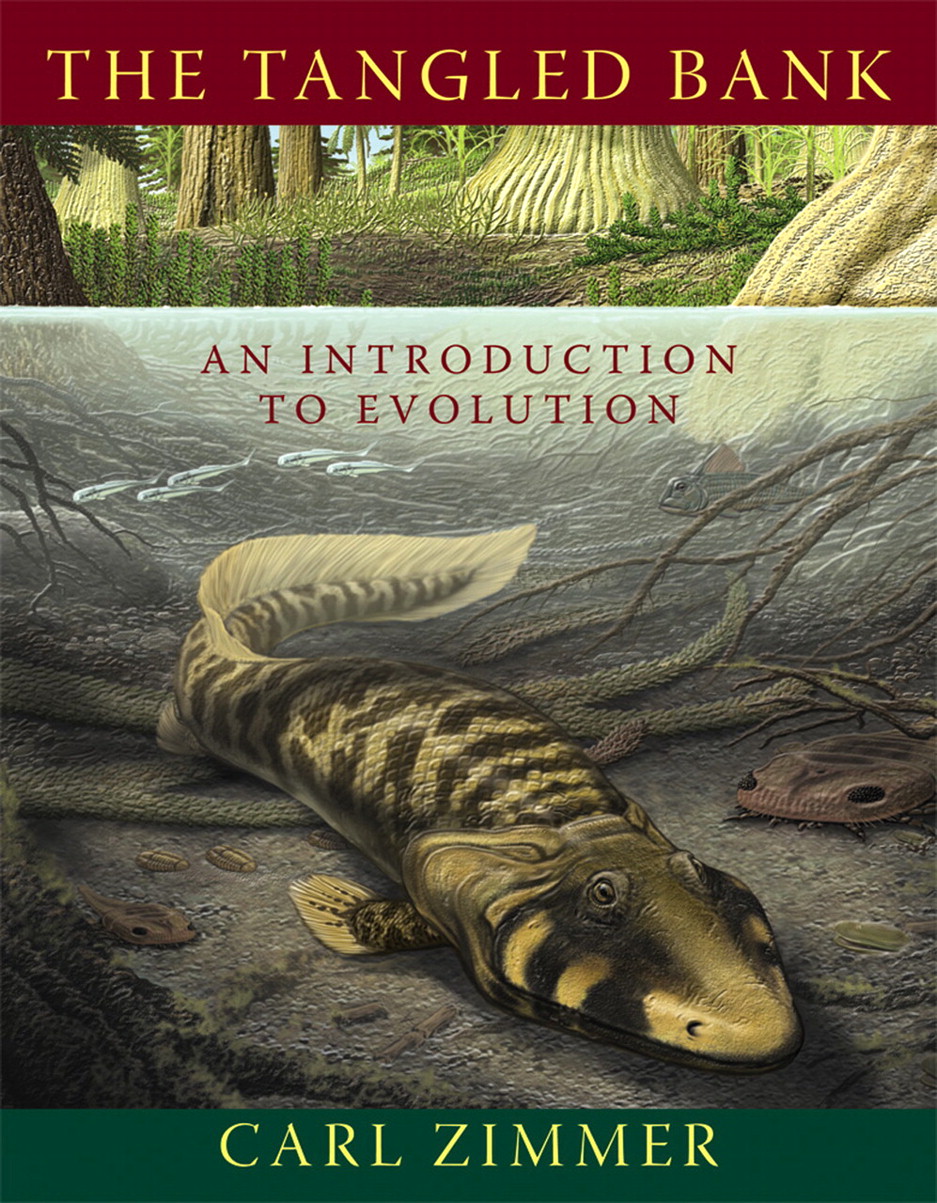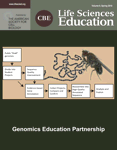A Long-Needed Textbook

Carl Zimmer's The Tangled Bank: An Introduction to Evolution,1 which is advertised as the first textbook about evolution for general readers, is an excellent book that all biologists will want to examine and most will want to buy. It is one of the two best treatments of evolution that I've come across for general audiences, and the best textbook I've seen for a nonmajors introductory biology course about evolution.
The Tangled Bank consists of 14 chapters (352 pages, plus a glossary and index) that address all of the major topics one would expect in an introduction to the richness and depth of evolution: an introduction to evolution (Chapter 1), the history of the idea (Chapter 2), geologic constraints of evolution (Chapter 3), the tree of life (Chapter 4), molecular aspects of evolution (Chapter 5), mutation/drift/selection (Chapter 6), the genetics of life's history (Chapter 7), adaptations (Chapter 8), speciation (Chapter 9), radiations and extinctions (Chapter 10), symbioses (Chapter 11), sex (Chapter 12), evolutionary medicine (Chapter 13), and the evolution of behavior (Chapter 14). Basic information is supplemented with case studies, evolutionary curiosities, and up-to-date examples. Throughout The Tangled Bank, Zimmer does an excellent job of presenting a coherent, evidence-based story about evolution while discussing topics as diverse as feathered dinosaurs, Mendelian and molecular genetics, population genetics, gene transfer, biogeography, inclusive fitness, radiometric dating, and emotions. The Tangled Bank is well-produced, up-to-date, readable, and exceptionally well illustrated. At no point does it falter.
Today, as in Darwin's day, the age of Earth remains a stumbling block to many people's acceptance of evolution. The popularity of young-Earth creationism—as evidenced by the remarkable success of young-Earth organizations such as Answers in Genesis and its Creation Museum—attests to the ongoing appeal of such anti-science views. Although all introductory biology books include statements of Earth's age, few such books adequately explain the science and critical thinking behind this conclusion—that is, they seldom explain how we know Earth's age. The Tangled Bank is an exception; its concise treatment of Earth's age is the best you'll find in an introductory biology book. After using discussions of the brilliant work of Nicolaus Steno, James Hutton, Charles Lyell, Georges Cuvier, and William Smith to set up the topic, Zimmer, in Chapter 3 (“What the Rocks Say”), provides a clear and convincing explanation of how we know the ages of rocks and the fossils they often contain.
Readers expecting an assault on creationists' claims about a young Earth, humans frolicking with dinosaurs, worldwide floods, and intelligent designers will be disappointed. Instead of trying to refute these nonscientific—and often nonsensical—claims, Zimmer instead presents an evidence-based story that helps readers understand evolution. Readers will then presumably have a science-based understanding for why biologists overwhelmingly accept evolution and reject creationists' claims. The only extended discussion of creationists' claims is in a boxed insert titled “How Not to Study Evolution” (pp. 174–175 of Chapter 8). That insert reveals Zimmer's reasoning for not addressing creationists' ideas: “Evolutionary biologists do not rehash long-settled subjects, such as the fact that life has evolved over billions of years, or that complex traits evolved in a step-wise manner from earlier traits. It would be just as pointless for astronomers to revive debates about whether the Earth revolves around the Sun, or vice versa.” If you're looking for a more confrontational approach to creationists' claims, I urge you to read Richard Dawkins' The Greatest Show on Earth: The Evidence for Evolution (New York: Free Press, 2009).
Whereas most books about evolution include a chapter devoted to human evolution, The Tangled Bank takes a different approach. Human evolution is not separate from the evolution of other species, and so humans are not isolated in a chapter of their own here. Instead, the story of human evolution is woven into most of the chapters of the book. Some readers will like this; others will not.
Although The Tangled Bank would be a useful textbook for an introductory evolutionary biology course for nonmajors, it is not without its deficiencies. For example, summary statements are the only end-of-chapter pedagogical features; there are no questions or other assignments that students can use to test or challenge their understanding of the material. There are also no discussions of evolution's unanswered questions that might stimulate readers' application of their reading to new areas of biology. The Tangled Bank also omits some tantalizing tidbits that would have flavored and enhanced the story—for example, how Nicolas Steno gave up science to become a priest, how Buffon estimated Earth's age, and how most of the geologic eras were named before the publication of Charles Darwin's On the Origin of Species by Christian geologists who were hostile or indifferent to evolution. However, these omissions are not consequential and do not take away from Zimmer's fine book.
Read The Tangled Bank. You won't be disappointed.
FOOTNOTES
1 The title of Zimmer's book comes from the beautiful concluding paragraph of the sixth (and final) edition of Charles Darwin's On the Origin of Species (1872). All previous editions of On the Origin of Species stated Darwin's famous metaphor as “It is interesting to contemplate an entangled bank, clothed with many plants of many kinds,” but in the sixth edition Darwin changed this metaphor to “a tangled bank.” In the sixth edition, Darwin also dropped the word “On” from his book's title.



